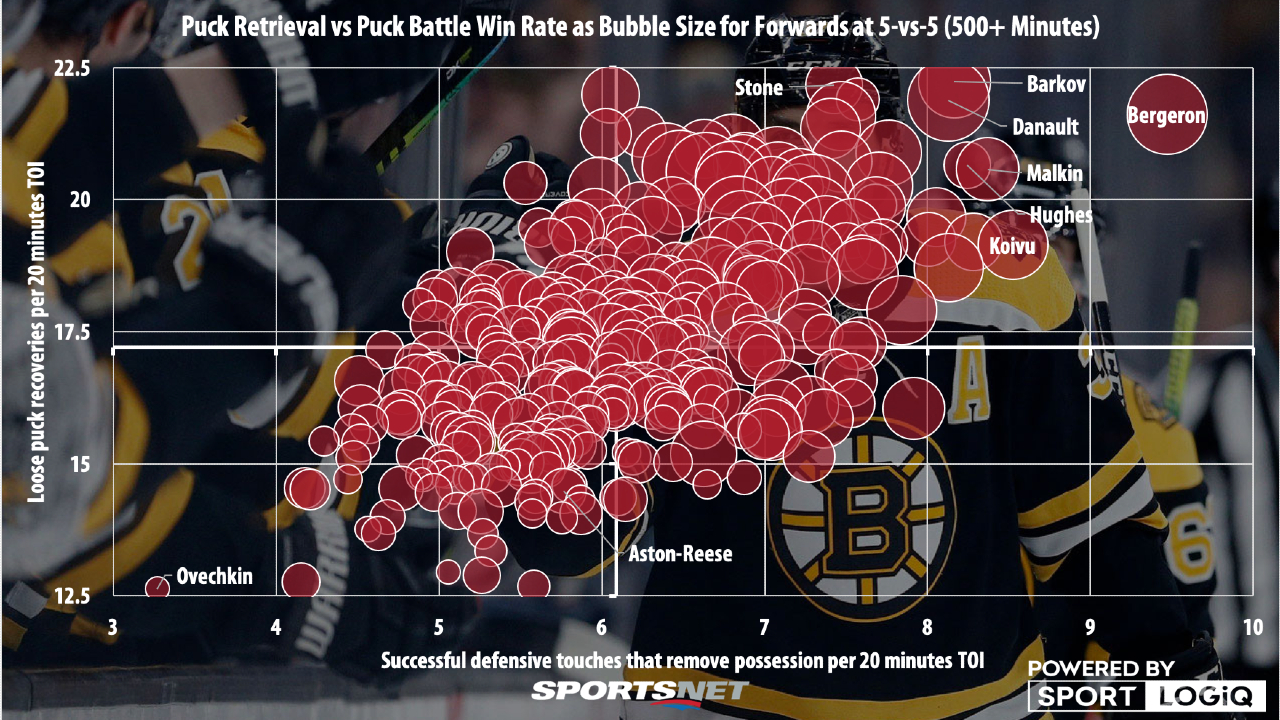Zuluss
Registered User
- May 19, 2011
- 2,494
- 2,250
No, swap Kane's 18 games against the Central for 18 against the Southeast. With a 28% higher scoring rate, he's going to gain about 5 points, or at least that's what we'd statistically expect. Ovechkin loses 5 going the other way.
Nah, it does not work this way. If Kane gets to play Southeast a lot, Ovechkin needs to play Northwest a lot, and Calgary and Colorado were as much of a feast as Tampa and Carolina that season. Western teams (less Chicago) had 2.69 GA in 2012/13, Eastern teams (less Caps) had 2.80 GA, a whopping 4% difference. So even if we take 4% from Ovechkin's numbers and give 4% to Kane, Ovechkin goes to 31 goals and 54 points, Kane to 24 goals and 57 points, MSL to 16 goals and 58 points, Toews to 24 goals and 50 points. Still no cigar, I am afraid. (And now we have the interesting question of "what would Ovechkin do on a high-octane offense, President-trophy and Cup-winning team?")
This was a 200 game stretch of Ovechkin being generally not up to snuff, with one good 20 game burst in the middle. It was only under the most unusual of circumstances that those 20 games managed to produce a Hart Trophy.
In the calendar year of 2013, Ovechkin had 62 goals and 97 points in 86 games. He was 4th in points (10% ahead of #10) and absolutely destroyed the goal-scoring field (#2 was Kane with 46 in 89, #10 was Corey Perry with 37, 68% difference). Transplant those leads in the last full season, 2018/19 - you would have a 69-goal, 106-point player. As I said, maybe Kucherov would have held on to his Hart, but Ovechkin would have been very close 2nd.
So it was not a 20-game burst, it was more of 60-game burst when Ovechkin was scoring goals at historically good levels; the talk whether he will get 50 goals in 50 consecutive games was going on for the whole first half of 2013/14, and I think he got to 49 in 50 at one point.
Trying to defend his 2014 season is a tough road to hoe. -35 on a 90-point team is unheard of. Shifting the blame to line mates doesn't pass the smell test considering his even strength GF/GA ratio is the worst of anyone on his team. The PP scoring bagged him another Rocket, but he was one of the worst first line players in the league at even strength.
If you have a ppg, 50-goal winger in the scoring environment, in which ppg for the full season is surely a top10 finish and potentially a top5 finish in points and no one is able to repeat a 40-goal season, and the said winger has a massive +/-, it is definitely the issue of how you deploy one of the best offensive tools in the league. You cannot expect a winger to be so much good defensively that he will single-handedly erase 35 goals differential, with his line playing the way it was playing; nor you want to turn one of the best offensive players in the league to spend too much effort on turning into a two-way forward.
Ovechkin's +/- in 2013/2014 was driven by a combination of several things: Caps were top5 in shorties against, even though they had the best PP in the league (this is how their PP is set up to this very day, btw). In 2013/14, they had 16 PPG more than the average team in the league, so the risk paid off, but Ovechkin's +/- suffered. Ovechkin was always deployed with the empty net behind him. Caps in 2013/14 were not too good at ES: they were 24th in the league in GF at 5v5 (Ovechkin had 20% of his team's 5v5 goals, compared to 19% in 2014/15 and 18% in 2009/2010).
In fact, in 2013/14 Ovechkin was 5th in the league in ESG and he added just 1 ESG in 2014/15 - what changed was his ES assists, which almost doubled. Ovechkin's line stopped trying to force a pass to Ovechkin at ES - and lo and behold, Ovechkin's on ice shooting % went from 6.8 to 9.3 in 2014/15, and his on-ice SV% also improved from 89.7 to 91.1 (in 2012/13, Ovechkin's on ice shooting % stood at 10.8 and on-ice SV% at 91.5).


